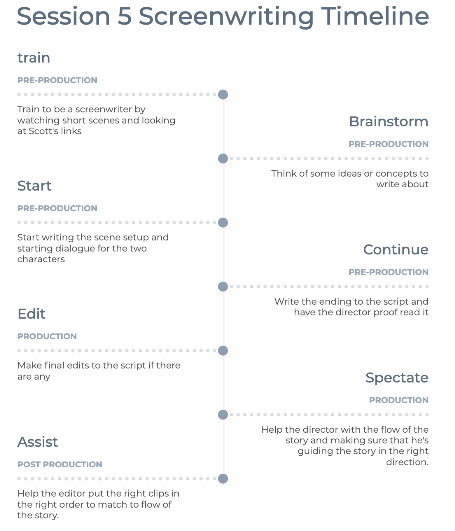Notes
A portion of this is copied from Wikipedia
1939-1952: The Devastation of War…And a New Movie Language
- Rome, Open City (1945) dir. Roberto Rossellini
- Stagecoach (1939) dir. John Ford– mixed shots of the tight stagecoach and the wide landscape around it
- Directed by John Ford (1971) dir. Peter Bogdanovich
- Osaka Elegy (1936) (introduced in Episode 3) dir. Kenji Mizoguchi
- Flesh and the Devil (1926) dir. Clarence Brown
- Follow the Boys (1944) dir. A. Edward Sutherland
- Citizen Kane (1941) (introduced in Episode 2) dir. Orson Welles
- Me and Orson Welles (2008) dir. Richard Linklater
- Chimes at Midnight (1965) dir. Orson Welles– inspired by shakespeare and always looked into the past
- Cabiria (1914) (introduced in Episode 1) dir. Giovanni Pastrone
- Intolerance (1916) (introduced in Episode 1) dir. D. W. Griffith
- The General (1926) (introduced in Episode 2) dir. Clyde Bruckman and Buster Keaton
- The Maltese Falcon (1941) (introduced in Episode 2) dir. John Huston
- The Best Years of Our Lives (1946) dir. William Wyler
- Code Unknown (2000) dir. Michael Haneke
- Sátántangó (1994) dir. Béla Tarr– used deep fake because it worked better with those films
- How to Marry a Millionaire (1953) dir. Jean Negulesco
- Un Homme et une Femme (1966) dir. Claude Lelouch
- Heat (1995) dir. Michael Mann– used deep space and focus to display the lights behind the characters as gloomy and misty
- Raging Bull (1980) dir. Martin Scorsese
- Bicycle Thieves (1948) dir. Vittorio De Sica– camera leaves room for bicycle riding
- Pin Up Girl (1944) dir. H. Bruce Humberstone
- Double Indemnity (1944) dir. Billy Wilder– noir in film is based on german expressionalism
- Portrait of a 66% Perfect Man: Billy Wilder (1982) dir. Annie Tresgot
- The Testament of Dr. Mabuse (1933) dir. Fritz Lang
- The Big Sleep (1946) dir. Howard Hawks
- Rio Bravo (1959) dir. Howard Hawks
- The Empire Strikes Back (1980) (introduced in Episode 1) dir. Irvin Kershner
- Out of the Past (1947) dir. Jacques Tourneur– women haunt noir films, movement and character wise
- The Hitch-Hiker (1953) dir. Ida Lupino
- Little Caesar (1931) dir. Mervyn LeRoy
- Le Quai des brumes (1938) (introduced in Episode 4) dir. Marcel Carné
- La Chienne (1931) dir. Jean Renoir
- Scarlet Street (1945) dir. Fritz Lang
- American Cinema: Film Noir (1995) dir. Alain Klarer
- Gun Crazy (1950) dir. Joseph H. Lewis– kept camera in the back seat the whole time
- Bonnie and Clyde (1967) dir. Arthur Penn
- L.A. Confidential (1997) dir. Curtis Hanson
- Blade Runner (1982) dir. Ridley Scott
- The Dark Knight (2008) dir. Christopher Nolan– almost all noir
- Siva (1989) dir. Ram Gopal Varma
- Titanic (1997) dir. James Cameron
- 71st Academy Awards (1999) dir. Louis J. Horvitz
- An American in Paris (1951) dir. Vincente Minnelli
- The Red Shoes (1948) dir. Michael Powell and Emeric Pressburger– used the color of the shoes to fill the screen in a dance scene
- Singin’ in the Rain (1952) (introduced in Episode 2) dir. Gene Kelly and Stanley Donen
- Flying Down to Rio (1933) dir. Thornton Freeland
- Gold Diggers of 1933 (1933) (introduced in Episode 2) dir. Mervyn LeRoy
- Indiscreet (1958) dir. Stanley Donen– cut the screen in half to loophole the scensorship to have people in the same bed without having them in the same bed
- Two for the Road (1967) dir. Stanley Donen
- A Matter of Life and Death (1946) dir. Michael Powell and Emeric Pressburger
- Post Haste (1933) dir. Humphrey Jennings– directed with a poetic style
- Listen to Britain (1942) dir. Humphrey Jennings and Stewart McAllister
- The Third Man (1949) dir. Carol Reed– shot in angles to show a moral imbalance
- The True Glory (1945) dir. Carol Reed and Garson Kanin
- Taxi Driver (1976) (introduced in Episode 1) dir. Martin Scorsese
